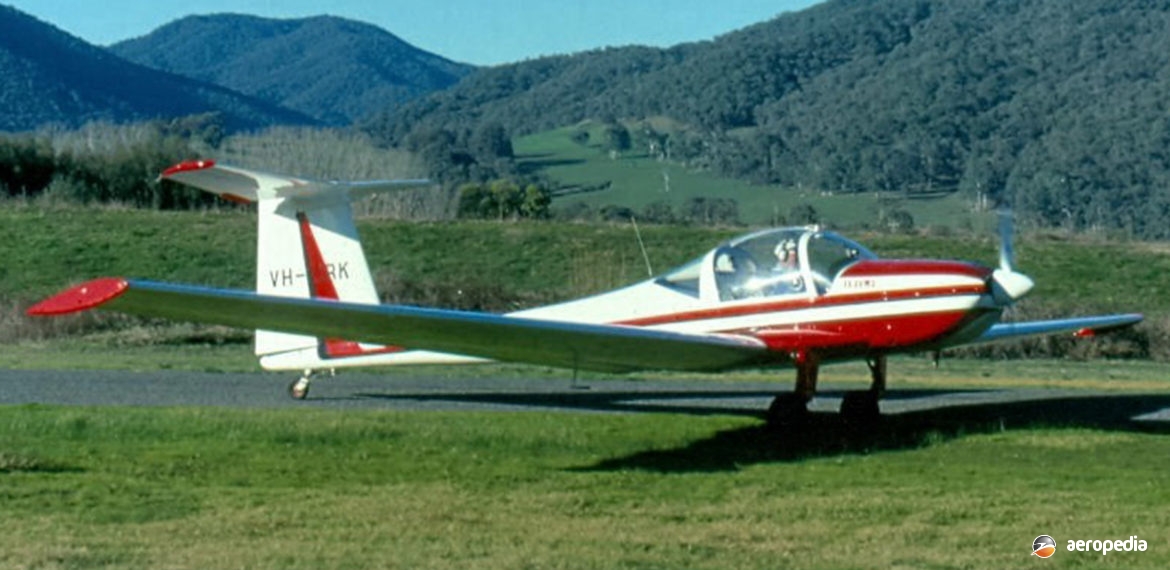Photograph:
ICA-Brasov IS-28M2 VH-GRK (c/n 45) at Mt Beauty, VIC in 1999 (David C Eyre)
Country of origin:
Romania
Description:
Two-seat powered glider
Power Plant:
One 51 kw (68 hp) Limbach SL 1700 E1 four-cylinder horizontally-opposed air-cooled engine
Specifications:
- Wingspan: 17 m (55 ft 9¼ in)
- Length: 7.5 m (24 ft 7¼ in)
- Height: 2.15 m (7 ft 0¾ in)
- Wing area: 18.24 m2 (196.4 sq ft)
- Max speed: 200 km/h (124 mph)
- Minimum sink speed: 80 km/h (50 mph)
- Take-off run: 160 m (524 ft)
- Stalling speed: 65 km/h (40 mph)
- Max rate of climb at sea level: 186 m/min (610 ft/min)
- Range: 450 km (248 miles)
- Empty weight: 530 kg (1,168 lb)
- Loaded weight: 745 kg (1,642 lb)
History:
IRMA (Aircraft Construction Factory), at two facilities at Brasov and Bucharest in Romania, for many years produced a series of high-performance gliders, including the IS-28M2 powered series. Two basic variants were developed, both with the rear fuselage, tail unit and main wings of the earlier IS-28B2 series. The IS-28M series featured a new low-set wing, re-designed forward fuselage, cockpit canopy and main undercarriage. Folding wings were standard.
The two basic variants have been the IS-28M1, a two-seat in tandem configuration, with the main undercarriage legs consisting of a retractable central wheel with outriggers under the wings, but otherwise similar to the IS-28M2. The latter had side-by-side seating, with the main undercarriage consisting of two retractable wheels side-by-side under the fuselage centre-section, and a steerable tailwheel.
The prototype IS-28M (YR-1013) was flown for the first time on 26 June 1976, and the type has since been produced in small volume, usually powered by the 51 kw (68 hp) Limbach SL1700 E1 engine driving a Hoffman HO-V-62/R160T propeller.
During 1980 three examples of the type were flown to Australia by ferry pilots for the distributor, Riley Aeronautics Pty Ltd at Tocumwal, NSW. These were Model IS-28M2s, with construction numbers 29, 31 and 32, later becoming VH-SSQ, VH-SSR and VH-SSU respectively. Since then further examples have been imported. One example was retired in 2014, being donated to and placed on display at the Queensland Air Museum at Caloundra.

